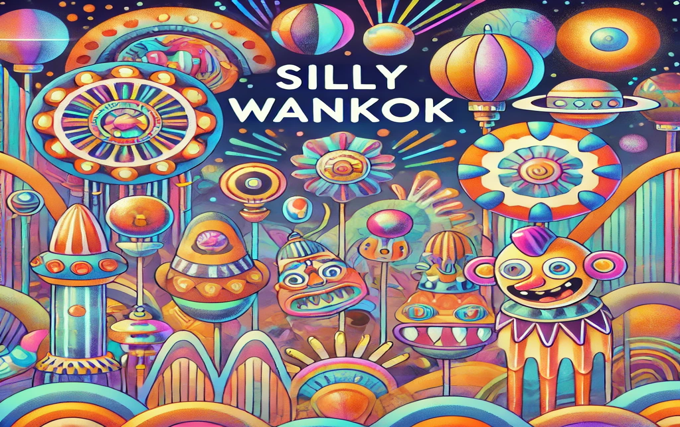The phrase “Silly Wankok” has emerged as a curious term that has piqued the interest of many online users. With its humorous tone and enigmatic origins, it has sparked discussions across social media, forums, and meme cultures. This article delves into the possible meanings, cultural influences, and trends that have elevated “Silly Wankok’s” into a buzzword.
Understanding “Silly Wankok”
Etymology and Possible Origins
The term “Silly Wankok’s” is inherently playful, combining two words that suggest humor and absurdity. However, its exact etymology is unclear. Some speculate it might be a fabricated phrase born out of meme culture, where nonsensical terms often gain popularity simply because of their quirkiness.
The first part, “Silly,” denotes something light-hearted or lacking seriousness. The second word, “Wankok,” appears to be a made-up term with no direct translation, lending itself to interpretation and creativity. The ambiguity of “Wankok” allows it to adapt to different meanings in various contexts.
Pop Culture Influences
Pop culture plays a significant role in the proliferation of unusual terms like “Silly Wankok.” From viral videos to meme pages, the digital ecosystem thrives on catchy and bizarre phrases. The randomness of “Silly Wankok” aligns with the humor styles seen in platforms like TikTok, Instagram, and Reddit.
In some cases, terms like this are linked to specific trends or influencers who use them as part of their branding or comedic repertoire. If “Silly Wankok” originated this way, its rise could be attributed to its catchy, offbeat nature.
The Role of Social Media in Popularizing “Silly Wankok”
Meme Culture and Virality
Social media is the breeding ground for trends, and “Silly Wankok” exemplifies how randomness fuels virality. Platforms such as Twitter and TikTok thrive on short, engaging content that often revolves around peculiar phrases. In this digital environment, “Silly Wankok” could have gained momentum through humorous videos, tweets, or memes that encouraged users to share and remix the term.
Memes, in particular, are powerful vehicles for spreading ideas. The visual and textual flexibility of memes allows “Silly Wankok” to take on different forms and interpretations, further fueling its appeal.
Hashtags and Challenges
Another way “Silly Wankok” might have gained traction is through the use of hashtags and challenges. A hashtag like #SillyWankok could prompt users to create content that aligns with the term’s quirky energy. Challenges such as “Silly Wankok Dance” or “Silly Wankok Prank” could easily go viral, engaging millions of participants worldwide.
Cultural Interpretations of “Silly Wankok”
Humor and Satire
One interpretation of “Silly Wankok’s” is that it serves as a form of satire. In a world filled with complex societal issues, the term offers an escape into absurdity. Its nonsensical nature invites laughter and provides a sense of relief from everyday stresses.
Satirical phrases like “Silly Wankok’s” also allow people to poke fun at overly serious or pretentious aspects of culture. By embracing something so unapologetically silly, individuals can challenge the norms of what is considered important or valuable.
Linguistic Experimentation
“Silly Wankok” could also be seen as an example of linguistic experimentation. In the digital age, language evolves rapidly, and new terms emerge through playful manipulation of words. The creation of “Wankok” could reflect this trend, where the focus is not on meaning but on sound and aesthetic.
This linguistic play often leads to the development of internet slang, which, although initially perceived as niche, can enter mainstream vernacular over time. Whether “Silly Wankok” will follow this trajectory remains to be seen.
The Psychology Behind the Appeal
The Power of Randomness
Humans are naturally drawn to novelty and randomness. Terms like “Silly Wankok’s” exploit this tendency by presenting something unexpected and unfamiliar. The brain interprets such randomness as a break from routine, which can trigger feelings of amusement or curiosity.
Additionally, the unpredictability of phrases like “Silly Wankok’s” fosters a sense of community among those who embrace it. Sharing in the humor creates a bond, making the term more memorable and impactful.
Emotional Resonance
The humor associated with “Silly Wankok’s” can evoke positive emotions such as joy and amusement. In an era dominated by stress and fast-paced lifestyles, light-hearted content provides a welcome distraction. The emotional resonance of a term like this contributes significantly to its popularity.
The Future of “Silly Wankok”
Will It Stand the Test of Time?
The internet is littered with fleeting trends that burn brightly but fade quickly. Whether “Silly Wankok’s” will endure or become a relic of its time depends on how it evolves. If the term finds a stable niche—perhaps as part of a larger meme, movement, or cultural phenomenon—it could achieve longevity.
Potential for Commercialization
As with many internet trends, there is a possibility that “Silly Wankok’s” could be monetized. Merchandise, such as t-shirts, mugs, and stickers featuring the term, could capitalize on its humor. Additionally, brands might incorporate the phrase into advertising campaigns to resonate with younger, internet-savvy audiences.
Conclusion
“Silly Wankok” is a testament to the power of the internet in shaping modern language and culture. Its quirky appeal lies in its randomness, humor, and adaptability. Whether it remains a fleeting trend or becomes a lasting cultural artifact, “Silly Wankok” highlights the creativity and spontaneity that define digital communication.
As we continue to explore new forms of expression, phrases like “Silly Wankok” remind us of the joy found in the unexpected and absurd. So, the next time you encounter “Silly Wankok” online, embrace the silliness and join in on the fun—it’s a light-hearted celebration of the quirky side of human nature.








